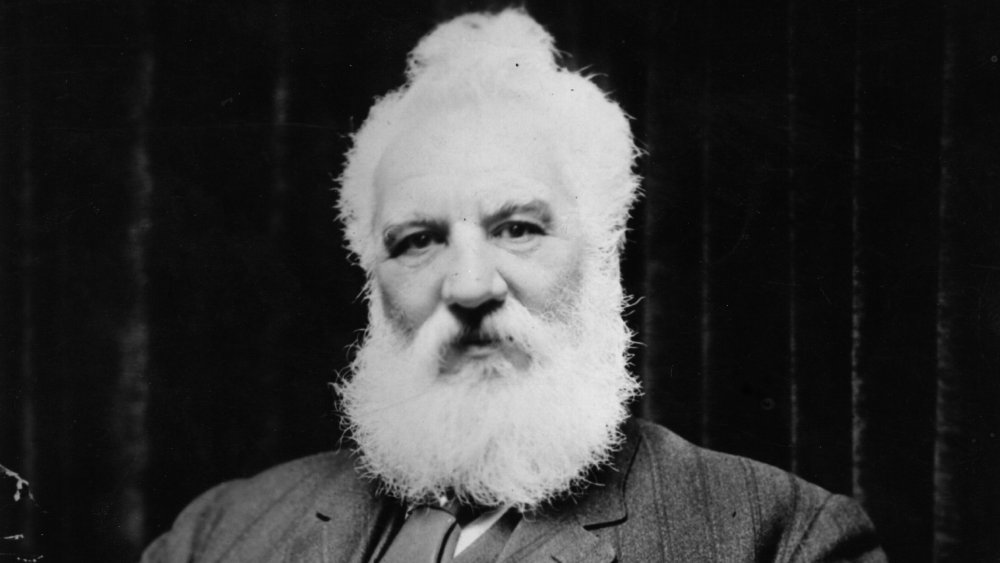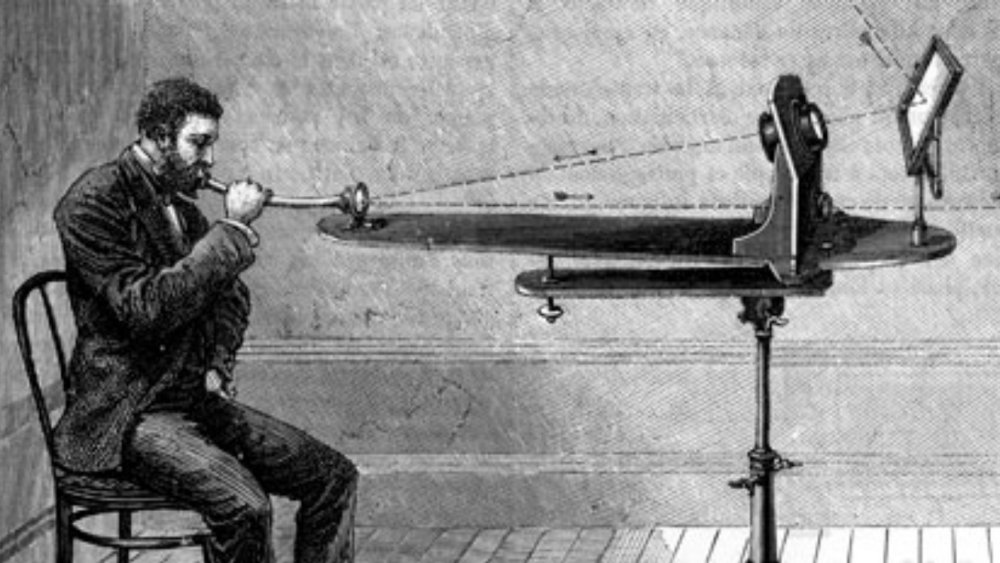Alexander Graham Bell's Greatest Invention You Probably Didn't Know About
Despite what you might have learned in history class, Alexander Graham Bell didn't invent the telephone. According to the Library of Congress, in 2002, the U.S. House of Representatives credited Antonio Meucci, an Italian immigrant who originated the design for a talking telegraph or telephone in 1849. The Guardian reports that Meucci presented his "telefono" in New York in 1860, roughly 16 years before Bell patented his own telephone design. Meucci filed for a caveat (an announcement of an invention) in 1871 but couldn't afford to renew it.
Bell wasn't even the only person who attempt to take credit for Meucci's invention in 1876. In fact, on the exact same day when Bell's lawyer applied to patent the telephone, the attorney of Oberlin professor Elisha Gray might have also applied to patent Gray's version of the telephone. Some experts suggest that Bell's lawyer resorted to some sort of trickery to get approved before Gray's lawyer. History writes that Bell got bombarded with more than 600 lawsuits over his patent. Five of them reached the Supreme Court, which sided with Bell. Lest we judge Bell too harshly, it's worth observing that he was the mind behind some legitimately impressive inventions – just not the one he's most famous for.
Bell didn't see the light; he heard it
Per History, in 1880, Alexander Graham Bell patented a wireless telephone known as the "photophone" that relied on light to transmit sound. Bell hailed it as "the greatest invention I have ever made; greater than the telephone." Though, that may be because he didn't truly make the telephone. If the photophone doesn't ring a bell, it's because it was way ahead of its time. Society hadn't advanced enough to accommodate the device on a broad scale. Bell recognized that his invention could be used "in times of war, when telegraph lines are down and the country is desolated" and by navigators at sea trying to contact people on land. But it would take the advent of fiber-optic technology decades later for light-based communication to go mainstream.
A year after patenting his "greatest" creation, Bell invented the metal detector. In 1881, President James Garfield was struck by an assassin's bullet. Hoping to locate the bullet, Bell built on an electromagnetic device that he tested on Civil War veterans who had bullets lodged in their bodies. It was a race against time, and sadly, time won because the steel wires in the president's mattress hindered the effort. After the president's death, the metal detector was successfully used to find the bullet.

